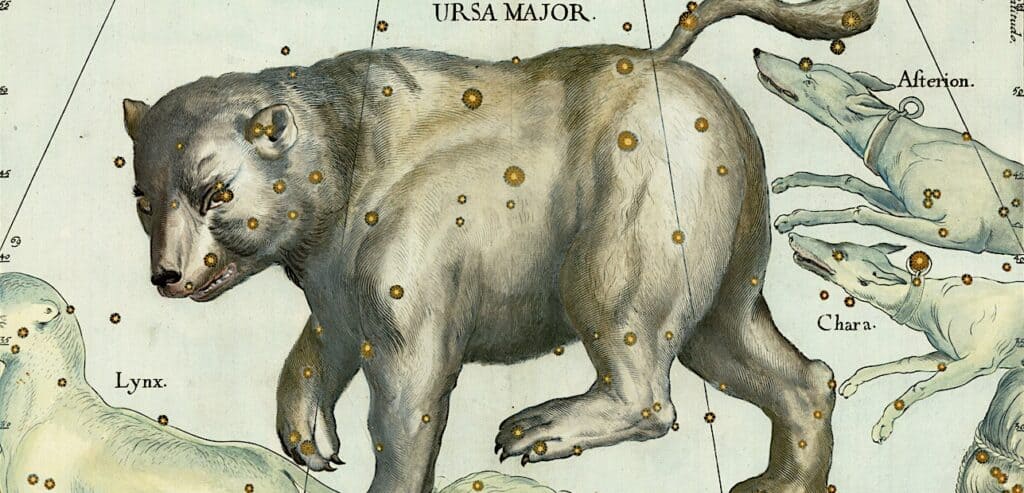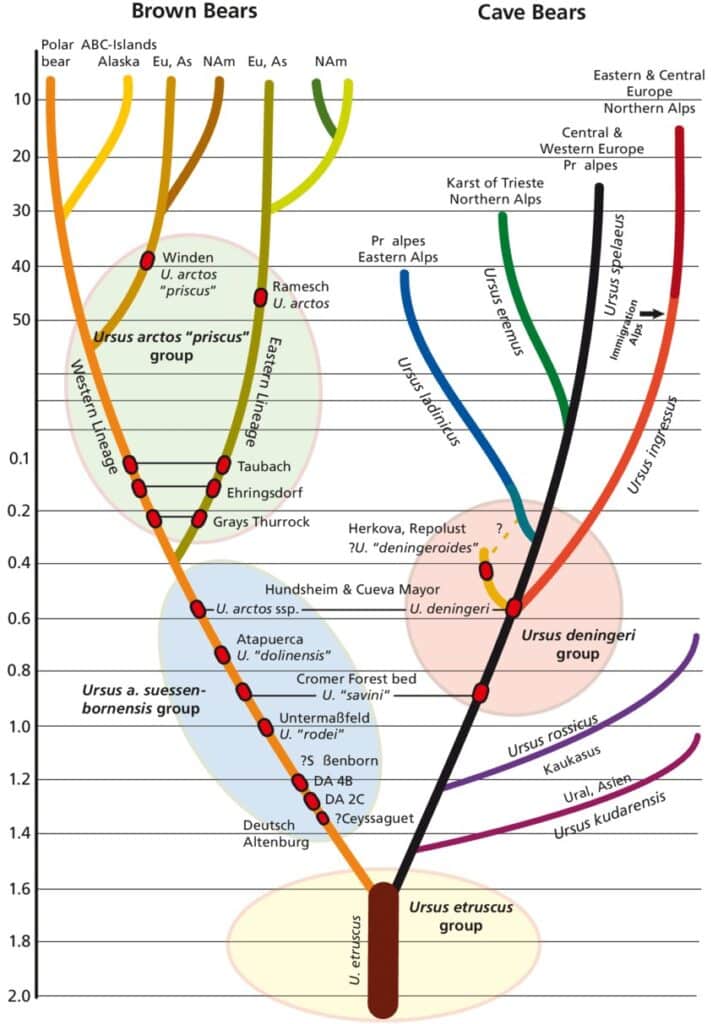Table of Contents
Not sure if this story has any historical relevance
Long, long ago there were only creatures on the earth. There were birds, bears, deer, mice, everything but people.
In this long ago time, all the animals spoke the same language.
And just like some people nowadays, they played tricks on one another and made each other laugh.
They also helped each other. So it was with all the animals.
One day in the winter when the lakes had frozen, but before the winter sleep, Bear was walking along the lakeshore.
As he was walking, he came upon Otter sitting near a hole on the ice with a pile of fish.
“You’ve got a mighty big pile of fish there,” Bear said. “How did you get them fish?”
Instead of telling how he dove down into the water and caught the fish, Otter decided to trick Bear.
You see, back then Bear had a very long bushy tail. He was very proud of his tail, and all the animals knew it.
“The way I catch my fish is by putting my tail in this ice hole,” Otter explained. “I wiggle it around once in a while so the fish see it. When a fish bites onto my tail, I quickly pull it up and out of the water.”
“That sure is an easy way to catch fish,” Bear said. “Do you mind if I use your fishing hole?”

Otter, laughing behind the Bear’s back, said, “I have enough fish. Use my fishing hole as long as you like.”
Then Otter picked up his fish and walked away. Bear carefully poked his tail into the ice hole and waited.
He waited and waited. Once in a while he’d wiggle his tail so the fish could see it.
Bear waited until the sun began to set, but not one fish even nibbled at his tail. At last, he decided to go home, but when he tried to stand up, his tail had frozen into the ice!
He couldn’t move! He pulled and pulled at his tail, but it was stuck tight. Finally, he pulled with all of his strength and ripped off half his tail!
Now you know why the Bear has a short tail, and remember . . . don’t always believe what people tell you.
Etruscan bear
Ancestry and Evolutionary Lineage
- Origin: Both cave bears and brown bears are descended from the Etruscan bear (Ursus etruscus), which lived from about 5.3 million years ago (Mya) to 100,000 years ago.
- Common Ancestor: The last common ancestor of cave bears and brown bears lived between 1.2–1.4 Mya.
- Immediate Precursor: The immediate precursor to the cave bear was likely Ursus deningeri (Deninger’s bear), existing in Pleistocene Europe from about 1.8 Mya to 100,000 years ago.
Morphological Changes
- Teeth Adaptations: Cave bears experienced a reduction and eventual disappearance of the three anterior premolars, possibly due to a primarily vegetarian diet.
- In some cave bear skulls, the third premolar is still present, while more derived specimens lack it.
- The remaining premolar merged with the molars, a process known as molarization, enhancing their ability to chew tough vegetation.
Genetic Studies
- DNA Sequencing: In 2005, scientists sequenced nuclear DNA from a cave bear that lived 42,000 to 44,000 years ago using genomic DNA from a tooth.
- This study retrieved 21 genes from remains previously unyielding with traditional DNA extraction methods.
- Previous Studies: Earlier research using mitochondrial DNA from remains aged 20,000 to 130,000 years indicated that cave bears were more closely related to brown bears and polar bears than to American black bears.
- Divergence: Cave bears diverged from brown bears before the distinct eastern and western brown bear lineages diversified and before the split between brown bears and polar bears, around 1.2–1.4 Mya.
- Hybridization: Recent studies suggest that there was some hybridization between cave bears and brown bears.




